While the entire Internet is being transformed into a giant video platform, the existential question remains: how to monetize video content?
Whether you are a creator/producer of content, a streaming platform or a publisher, you are certainly looking for the best way to monetize your content. We give you here 7 levers to monetize online video, hope that will inspire you!
1- Traditional advertising
2- Sponsorship
3- Transactional or subscription videos on demand
4- Sell merchandising or related products
5- Sell related experiences or services
6- Donation
7- Revenu share with Affiliation
1. TRADITIONAL ADVERTISING
The monetization of video content through advertising has been democratized through YouTube. It consists of inserting advertisements before (pre-roll), during (mid-roll) or after (post-roll) your video content in order to collect advertising revenue. Nevertheless, on YouTube, unless you are an important partner, it is difficult to have control over advertising campaigns: choice of brands/advertisers, revenue optimization, intermediary commissions, etc. Not to mention that some videos are “demonetized” if they do not respect certain rules.
It is therefore more interesting to have your own video streaming platform to have total control over this monetization. You can then connect to several different ad servers, optimize budgets, and enter into direct contracts with certain brands. This obviously requires a little more configuration than just checking a “monetize my video” box, but the results are much more powerful. Managing advertising via your own “ad server” can guarantee extremely higher revenues. For example, the cost per thousand views (CPM) is $3 on average on YouTube. Via your own Ad Server, you can get CPMs around $30, which is 10 times more revenue!
If you are interested in this model, at OKAST we provide a solution to create your own premium streaming platform and plug your platform to different ad servers.
Remember: your platform = your rules! In addition, you will have all the data related to your content and audience, which can be sold very well to advertising partners…
Please note that monetizing your video content through advertising is not necessarily in the form of a video ad associated with your content. For example, you could display ads (banners etc…) around your videos within your own platform. The Google Ad Sense network is generally the most relevant. Be careful, however, not to increase the number of ads at the risk of giving a Christmas tree effect on your platform / VOD website. Also, try to display products or services ads which are related to your content.
2. SPONSORSHIP
Sponsorship is an advertising model that consists in positioning one or more advertisers as a “partner” of your content offer. In this type of case, generally, 1 or 2 (maximum) advertisers are integrated in your content offer in a deeper way. This can take different forms:
- via a “billboard” (i.e. a small video format such as “X presents you”)
- via logos on your platform, fixed ad placements, advertorials, co-branded content sections
- via product placement
It is therefore a more premium model, and focused on one or two advertisers. In this case, there are generally no advertising formats (pre-rolls, displays, etc.) from other brands to avoid interfering with the environment. Sponsorship gives the impression that the experience and video content are fully offered by a brand or an advertiser.
This type of model generally generates more revenue than traditional advertising and traditional “CPM “s. However, this requires a direct contract with a brand.
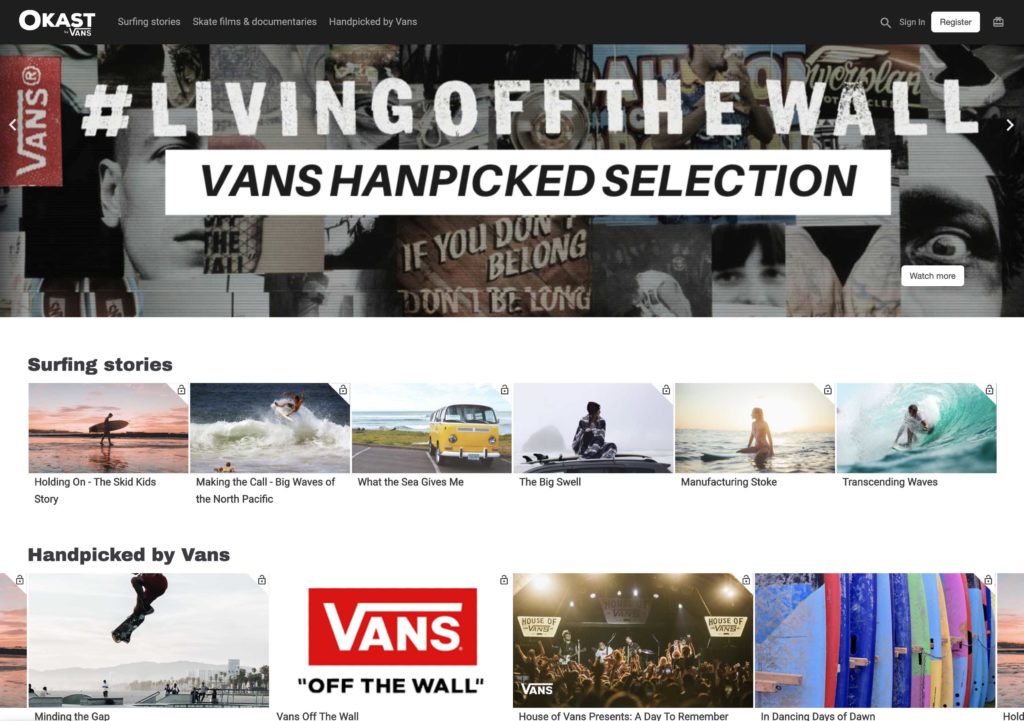
For the implementation, obviously you need to have your own streaming site or your own white label VOD platform to have all the flexibility to set up these operations which require a lot of customization. At OKAST we have created the “sponsorship” model that allows you to create sponsorship campaigns and distribute the video format of your choice before, during or after your content with redirection links.
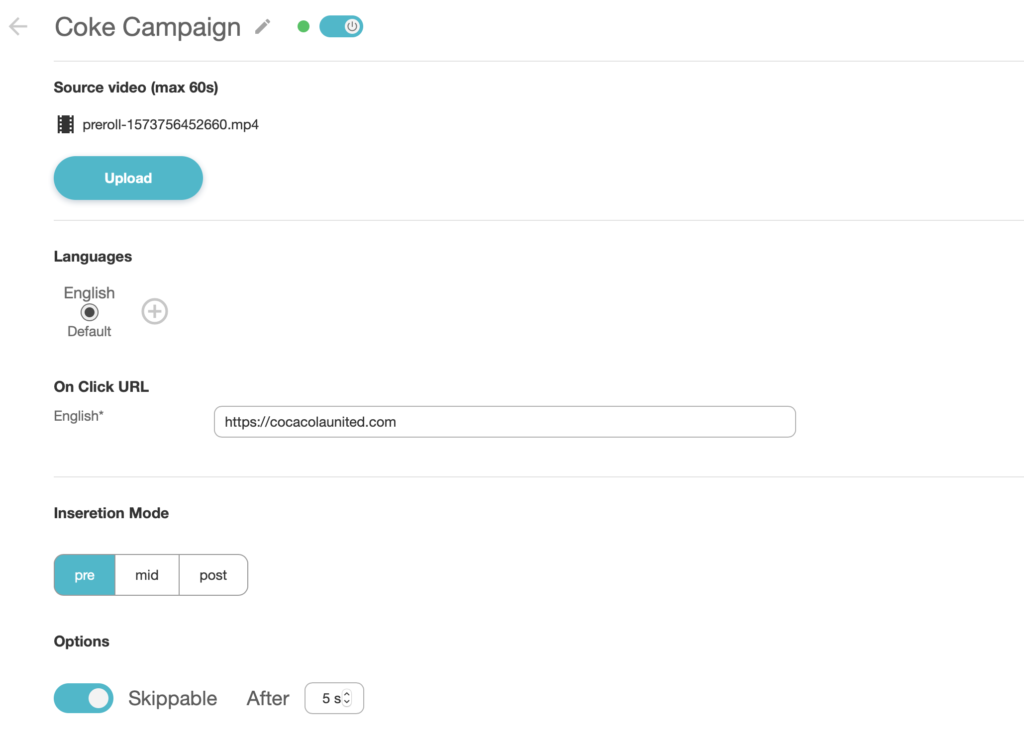
In addition, the “display” mode, also offered on OKAST solution, allows you to add “image” formats to complete the sponsorship experience. You can therefore create a real integrated operation with advertisers who would be interested in associating themselves with your video offer.
3. TRANSACTIONAL OR SUBSCRIPTION VIDEO-ON-DEMAND (TVOD & SVOD)
There is also the possibility to sell your videos or to rent your videos (TVOD) one by one or in a pack. This model is obviously more for premium videos or added value content (courses or training).
The video-on-demand model also includes the popular subscription model (SVOD). In this case, you offer an unlimited catalogue of content accessible against a recurring payment.
While these models are now quite common, you can also offer many variants to stand out and reach more people:
- If your content is not sufficiently premium, you can offer a “volume” offer with a large number of contents at low prices (for example 30 videos for 0.99 Eur) or offer access for a very long period (Monthly, 6 months, 1 year)
- For the SVOD model, you can propose recurrent payments at 3 months, or at 9 months. Or offer different prices depending on the access to various video content qualities (SD, HD or 4K).
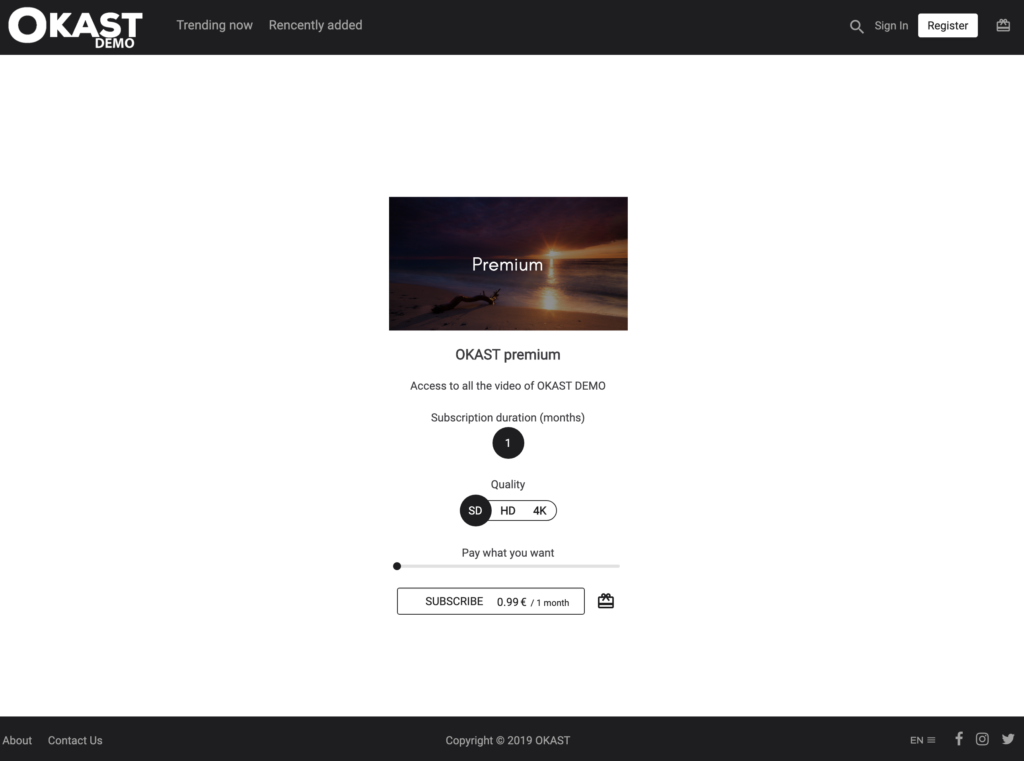
Be original, in order to reach as many people as possible. At OKAST, we offer very flexible monetization options that allow you to offer video-on-demand content.
4. SELL MERCHANDISING AND RELATED PRODUCTS
Another way to monetize video content is to sell related products. Here again, several strategies are possible:
- Create good quality video content, accessible free of charge, that will be used to create a community or audience to sell them physical products or merchandising later. These products can also be inserted directly into video content (this is called product placement).
- Offer video + physical products packages: some business models offer video content (a film) as well as merchandising products (e.g. an original soundtrack or a book) to increase the value of their initial content, and to provide a more immersive experience around their content.

In this case, video content is the lever that allows you to generate additional or even “ancillary” revenues.
Please note: it is quite possible to sell your own physical products, but it is also quite possible to sell affiliate products (that are not your products). In this case, you can promote products sold on Amazon or Rakuten (for example) and get a commission every time there is a sale.
5. SELL RELATED EXPERIENCES OR SERVICES
It is possible to associate video content with the sale of services or experiences. For example, some media or music content creators could offer subscriptions to streaming services that would include tickets (or discounts) for concerts or events.
Think about your video monetization strategy from a community perspective. For example, the creation of a “club” is an experience that is easier to monetize. For example, you are a media or influencer with an active community, why not create a subscription service that would actually be a “club” in which members would have access to premiere, video preview or exclusive content, face-to-face lives, contests etc. These kinds of intangible privileges have a very emotional value, so it is easier to monetize them or include them in a subscription.
6. DONATION
This model was developed with the creation of services such as Patreon. The concept: the video content creator gets support from his community through monthly donations (usually from €1 to several hundred euros for the biggest fans). Twitch also offers this model which works very well.
The disadvantage of these services: a minority pays for benefits that serve the entire community.
Patreon is not the only service that allows this model. At OKAST we offer this possibility to offer the designer more than the established price. The advantage of using a service like OKAST is that it is then possible to offer additional content to those who have made a donation. And thus give priority to donors over the rest of the community.
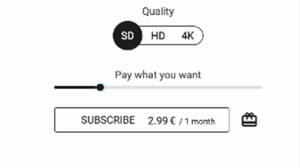
Traditional and popular media, such as The Guardian in the UK has built its model on donation, and it works quite well.
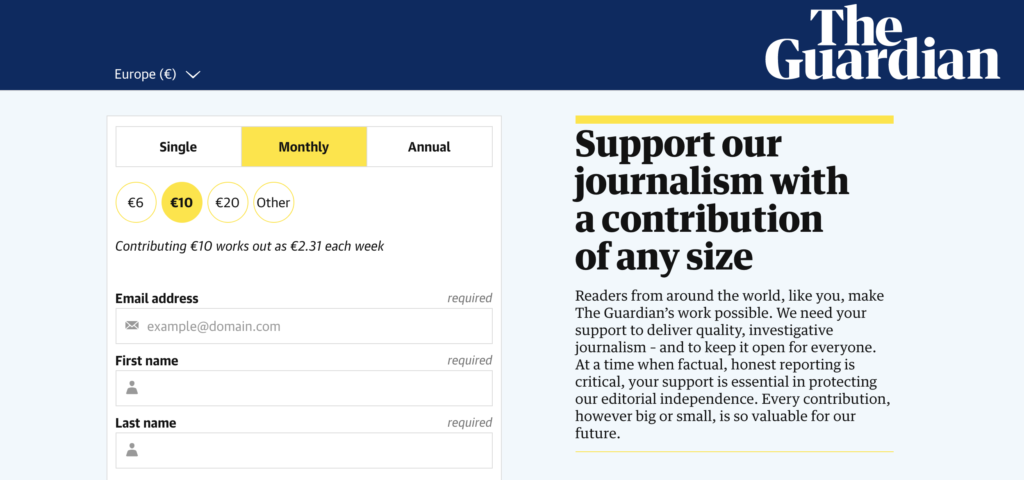
7. REVENU SHARE WITH AFFILIATION
This last lever is not a monetization model but rather a way to develop monetization. If you offer premium offers (TVOD or SVOD) you may need promotion or relays around these offers to develop the revenue from your video content.
And affiliation is one of the best ways. The principle: reward your community for the work of promoting your monetized content. This can be your community but also influencers or media partners.
For example, you have a SVOD platform or a VOD website to sell your videos, thanks to affiliation you could offer your affiliates individual “tracked” links that would lead to your content offer. As soon as a subscription is purchased or a video content is rented by a user coming from one of your affiliates’ audience pool you could then reward them through revenue sharing on the transaction.
At OKAST, we are integrated with the Tapfiliate solution, which allows you to launch affiliate campaigns very easily and to reward your affiliates if they help you monetize your video content.
TO CONCLUDE
Of course, many of these monetization models can be mixed. For example, the freemium model is interesting, it allows you to offer free content with advertising, then for those who wish, switch to a premium offer without advertising or with additional benefits via a premium subscription.
Nevertheless, the most important point is that, if your video content offer is not of good quality, and you do not develop your own audience, then monetization will not be effective. The first priority is therefore to produce (or have the broadcasting rights to) quality video content.
Are you looking for a flexible solution to monetize your video content through the creation of a white-label platform?
Contact us at hello@okast.tv